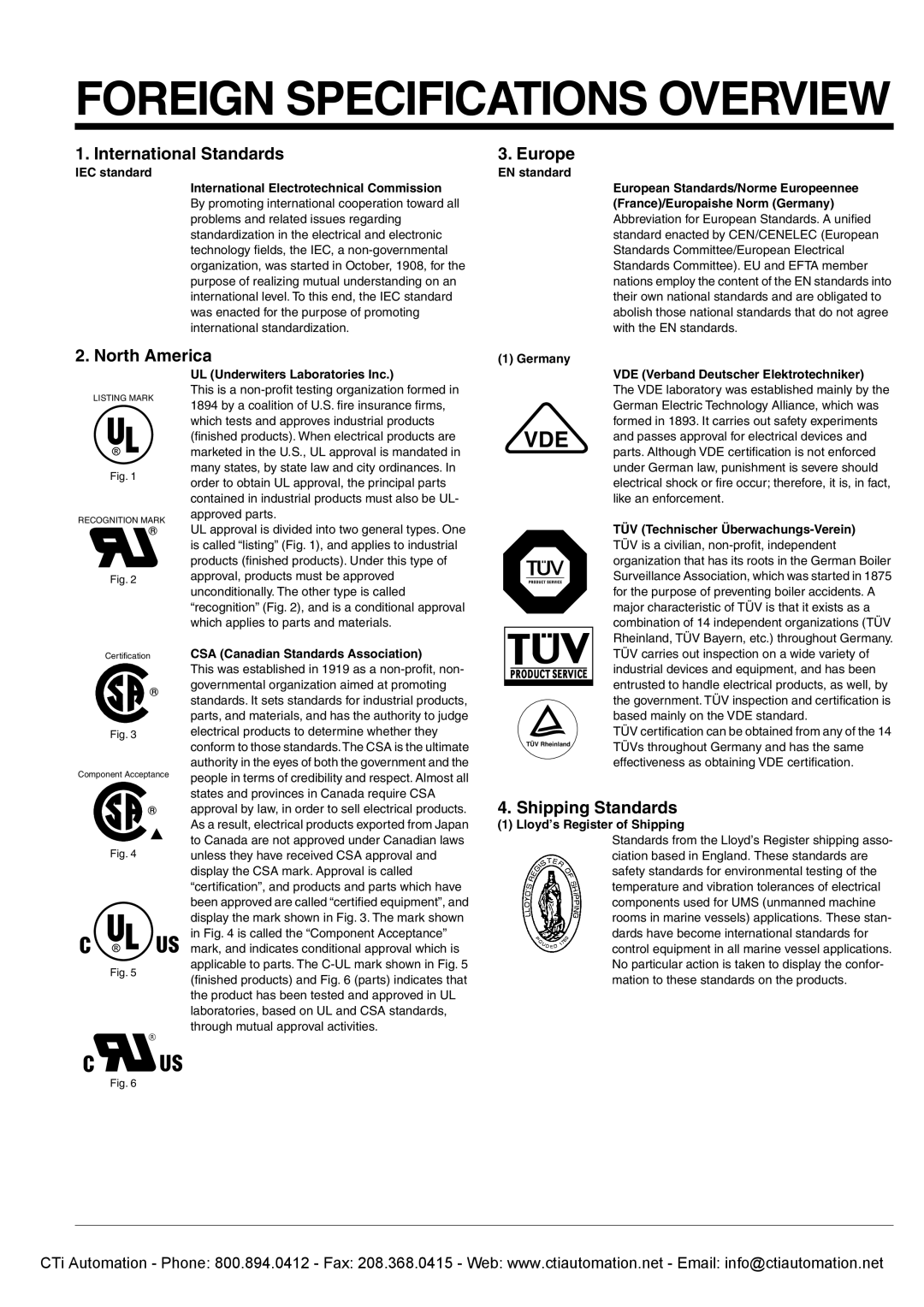
FOREIGN SPECIFICATIONS OVERVIEW
1. International Standards
IEC standard
International Electrotechnical Commission
By promoting international cooperation toward all problems and related issues regarding standardization in the electrical and electronic technology fields, the IEC, a
2. North America
3. Europe
EN standard
(1) Germany
European Standards/Norme Europeennee (France)/Europaishe Norm (Germany)
Abbreviation for European Standards. A unified standard enacted by CEN/CENELEC (European Standards Committee/European Electrical Standards Committee). EU and EFTA member nations employ the content of the EN standards into their own national standards and are obligated to abolish those national standards that do not agree with the EN standards.
LISTING MARK
Fig. 1
RECOGNITION MARK
Fig. 2
UL (Underwiters Laboratories Inc.)
This is a
UL approval is divided into two general types. One is called “listing” (Fig. 1), and applies to industrial products (finished products). Under this type of approval, products must be approved unconditionally. The other type is called “recognition” (Fig. 2), and is a conditional approval which applies to parts and materials.
VDE
VDE (Verband Deutscher Elektrotechniker)
The VDE laboratory was established mainly by the German Electric Technology Alliance, which was formed in 1893. It carries out safety experiments and passes approval for electrical devices and parts. Although VDE certification is not enforced under German law, punishment is severe should electrical shock or fire occur; therefore, it is, in fact, like an enforcement.
TÜV (Technischer Überwachungs-Verein)
TÜV is a civilian,
Certification
Fig. 3
Component Acceptance
CSA (Canadian Standards Association)
This was established in 1919 as a
TÜV Rheinland
TÜV carries out inspection on a wide variety of industrial devices and equipment, and has been entrusted to handle electrical products, as well, by the government. TÜV inspection and certification is based mainly on the VDE standard.
TÜV certification can be obtained from any of the 14 TÜVs throughout Germany and has the same effectiveness as obtaining VDE certification.
Fig. 4
Fig. 5
approval by law, in order to sell electrical products. As a result, electrical products exported from Japan to Canada are not approved under Canadian laws unless they have received CSA approval and display the CSA mark. Approval is called “certification”, and products and parts which have been approved are called “certified equipment”, and display the mark shown in Fig. 3. The mark shown in Fig. 4 is called the “Component Acceptance” mark, and indicates conditional approval which is applicable to parts. The
4. Shipping Standards
(1) Lloyd’s Register of Shipping
Standards from the Lloyd’s Register shipping asso- ciation based in England. These standards are safety standards for environmental testing of the temperature and vibration tolerances of electrical components used for UMS (unmanned machine rooms in marine vessels) applications. These stan- dards have become international standards for control equipment in all marine vessel applications. No particular action is taken to display the confor- mation to these standards on the products.
Fig. 6
CTi Automation - Phone: 800.894.0412 - Fax: 208.368.0415 - Web: www.ctiautomation.net - Email: info@ctiautomation.net
